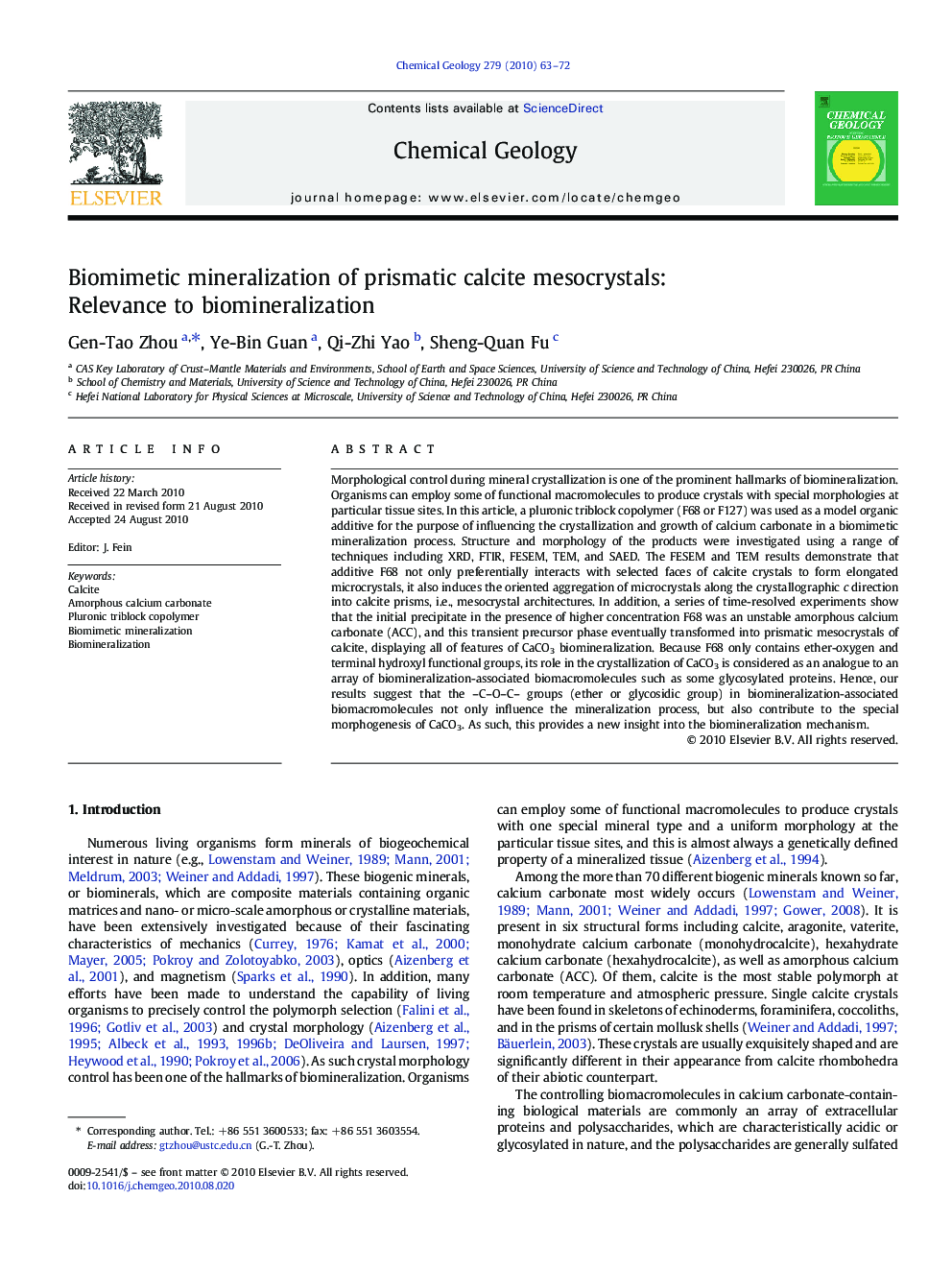| کد مقاله | کد نشریه | سال انتشار | مقاله انگلیسی | نسخه تمام متن |
|---|---|---|---|---|
| 4699836 | 1637677 | 2010 | 10 صفحه PDF | دانلود رایگان |

Morphological control during mineral crystallization is one of the prominent hallmarks of biomineralization. Organisms can employ some of functional macromolecules to produce crystals with special morphologies at particular tissue sites. In this article, a pluronic triblock copolymer (F68 or F127) was used as a model organic additive for the purpose of influencing the crystallization and growth of calcium carbonate in a biomimetic mineralization process. Structure and morphology of the products were investigated using a range of techniques including XRD, FTIR, FESEM, TEM, and SAED. The FESEM and TEM results demonstrate that additive F68 not only preferentially interacts with selected faces of calcite crystals to form elongated microcrystals, it also induces the oriented aggregation of microcrystals along the crystallographic c direction into calcite prisms, i.e., mesocrystal architectures. In addition, a series of time-resolved experiments show that the initial precipitate in the presence of higher concentration F68 was an unstable amorphous calcium carbonate (ACC), and this transient precursor phase eventually transformed into prismatic mesocrystals of calcite, displaying all of features of CaCO3 biomineralization. Because F68 only contains ether-oxygen and terminal hydroxyl functional groups, its role in the crystallization of CaCO3 is considered as an analogue to an array of biomineralization-associated biomacromolecules such as some glycosylated proteins. Hence, our results suggest that the –C–O–C– groups (ether or glycosidic group) in biomineralization-associated biomacromolecules not only influence the mineralization process, but also contribute to the special morphogenesis of CaCO3. As such, this provides a new insight into the biomineralization mechanism.
Research highlights
► Initial precipitate is unstable amorphous calcium carbonate in the presence of F68.
► Transient ACC precursor finally transforms into prismatic calcite mesocrystals.
► Features of CaCO3 biomineralization are exhibited in the biomimetic mineralization.
► Role of F68 in CaCO3 mineralization are similar to glycosylated proteins.
► Glycosidic groups in biomolecules may contribute special morphology of biocalcite.
Journal: Chemical Geology - Volume 279, Issues 3–4, 13 December 2010, Pages 63–72